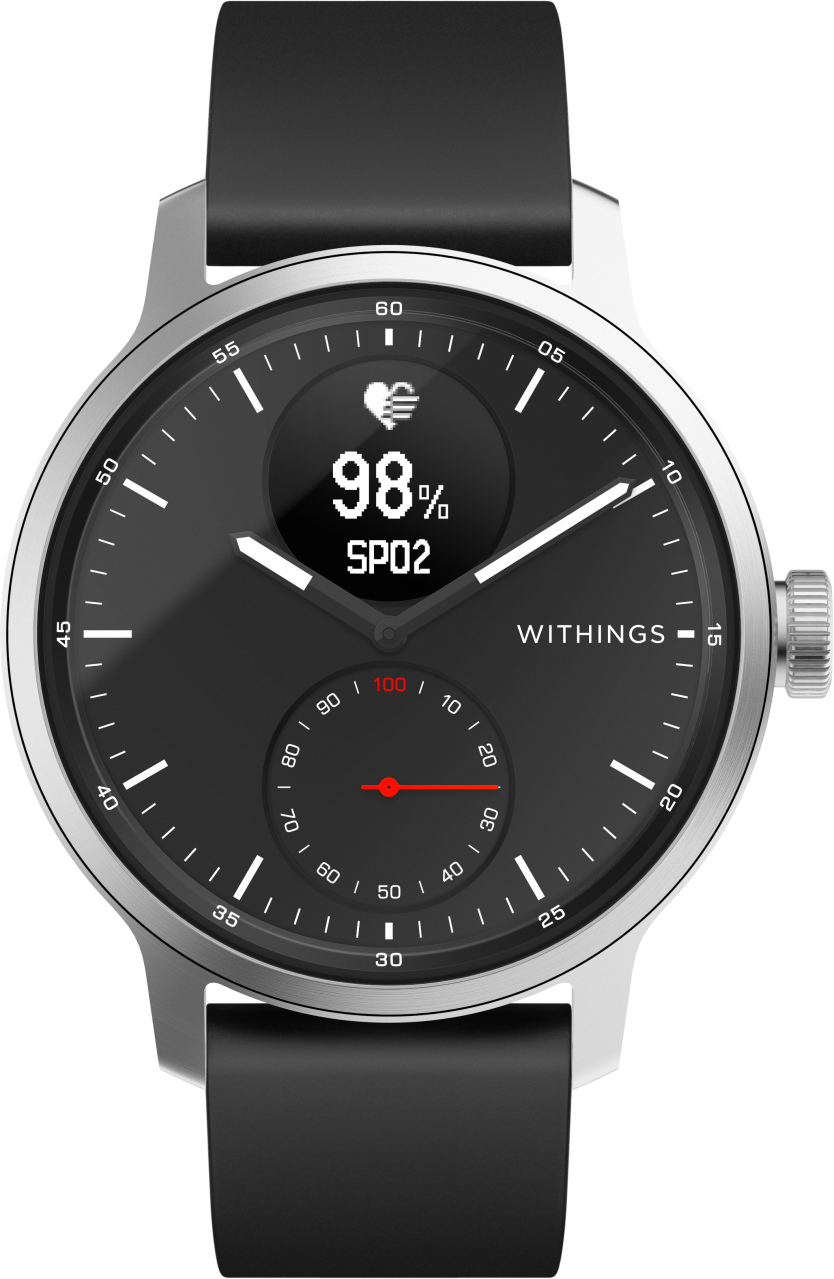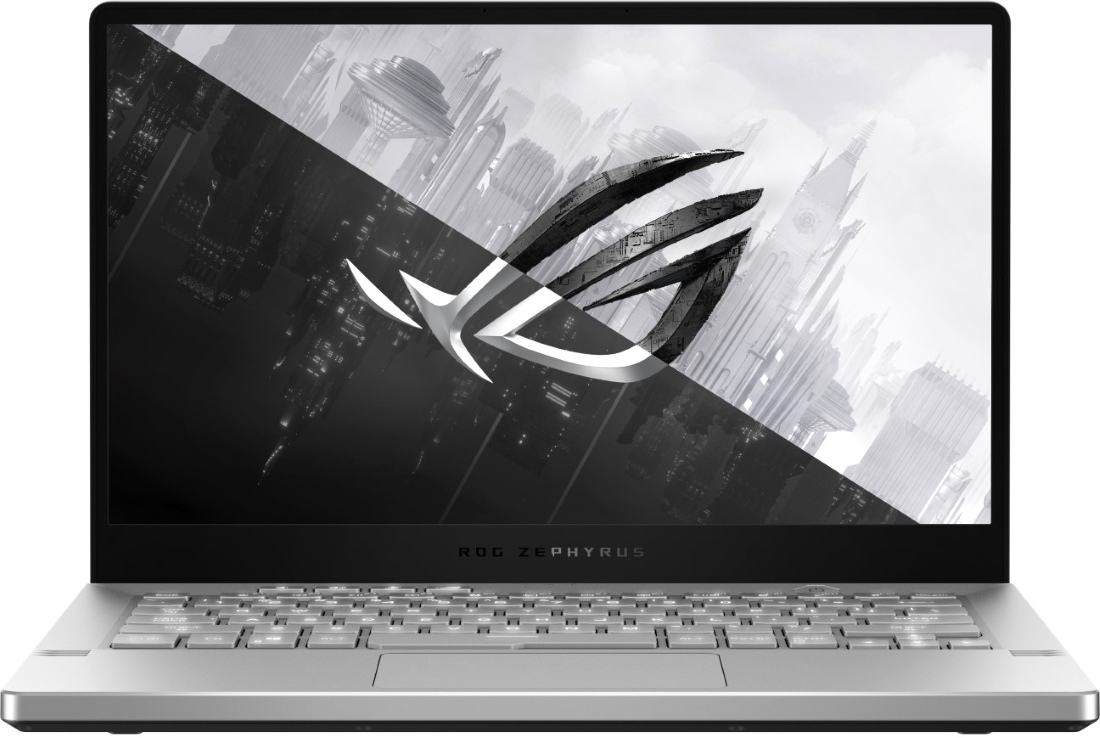CES-2020 Premiere Parade

You can get acquainted with last year's hits of the event in the article "Hit Parade of Interesting New Products at CES-2019".

| Tehnoexpert.com.ua | 14 575 ₴ | To Store |
| Ebox24.biz | 14 863 ₴ | To Store |
"Smart" watches in a classic wrapper are not a curiosity these days. Disguised as a clock, these wearable gadgets are capable of much more than just showing the time. Take, for example, the new Withings-branded ScanWatch, which was co-developed with cardiologists and tested in a clinical setting.
Doctors paid such close attention to the device due to the presence of ECG functions and monitoring the level of blood oxygen saturation during sleep in the assets of smartwatches. The heart rate monitor on board the model registers the number of contractions of the heart muscle, recognizes an irregular heartbeat rhythm, and the watch can also detect atrial fibrillation. As for determining the level of oxygen in the blood, this option will come in handy for detecting apnea disease - the suspension of pulmonary ventilation during sleep.
In the role of a fitness assistant, the watch collects a standard set of information about the number of steps taken, the distance covered, the number of calories burned, and monitors the quality of sleep. To display measured indicators and notifications, a mini-display is used, which is inscribed directly into the hand dial of the wearable device.
The smartwatch is assembled in a stainless steel case with a declared degree of water protection of 5 ATM. On one "refueling of tanks" of the battery, the model is able to hold out offline for up to 30 days. Watch data can be uploaded to Apple Health, Google Fit, Strava, and other popular activity tracking apps. The "smart" gadget is available in sizes of 38 mm and 42 mm - for the fragile female and male wrist, respectively.

A series of computer equipment and peripherals Republic of Gamers from Asus is familiar to every avid gamer. At the very dawn of 2020, an addition happened to it - the line was replenished with a compact and lightweight laptop named Zephyrus G14.
The computer is imprisoned in armor made of magnesium-aluminium alloy with a total mass of about 1.6 kg. In the case of the device with a thickness of only 17.9 mm, they managed to place a very tasty “stuffing”. Judge for yourself, in the maximum configuration, the laptop is equipped with a 16-thread “octa-core” AMD Ryzen 7 4800HS, 32 GB of RAM and 1 TB of permanent memory, as well as a discrete graphics card NVIDIA GeForce RTX 2060 with 6 GB of GDDR6 video memory.
The cooling of the “insides” of the laptop is provided by five heat pipes in conjunction with n-Blade fans. To improve the flow of cold air to the vents, the laptop was equipped with an ErgoLift hinge, which raises the entire case when opened. Another technological "trick" of the model is the triangular AniMe Matrix display on the outside of the lid, consisting of 1215 mini-LEDs. There are 256 brightness levels available for each. This mini-screen can display animations and images, in addition, it is able to flicker to the beat of the music.
Asus ROG Zephyrus G14 main display specifications vary by configuration selected. “In the base” the laptop is equipped with a FullHD matrix with a refresh rate of 60 Hz, options with a 120 Hz FullHD screen and a QuadHD resolution display are also available. Special mention deserves a high-quality audio system consisting of two 2 x 2.5 W speakers and a pair of 0.7 W tweeters. A fingerprint scanner is integrated into the power button of the computer. The gaming ultrabook will appeal to adepts of spending time in virtual game worlds, who often travel or are constantly on the move due to their lifestyle. Small, light and powerful enough - it will give odds to many "adult" gaming laptops.

| Justbuy.com.ua | 65 960 ₴ | To Store |
| Palladium.ua | 98 199 ₴ | To Store |
| Hi-Res Store Online | 86 999 ₴ | To Store |
| Цифра | 63 999 ₴ | To Store |
| Stylus.ua | 64 999 ₴ | To Store |
The successor to the "folk" full-frame DSLR Nikon D750 body Price from 63 000 ₴ have been waiting for over five years. And they waited for it at the beginning of 2020, when the D780 model was “rolled out” to replace the camera - an analogue of the camera Nikon Z6 body Price from 80 000 up to 97 297 ₴ in a mirror image.
A 24.5 MP full-frame image sensor with pixel backlight is placed in a waterproof magnesium alloy body. The native range of its photosensitivity is measured within the limits of 50-51200 ISO(with the possibility of software expansion to ISO 204800). The most powerful of the current generation of image processors, Expeed 6, is responsible for processing information. It is he who ensures excellent camera performance at high ISOs and a full frame rate of 7 fps (or up to 12 fps in LiveView mode when recording 12-bit RAW- files).
The key differences between the Nikon D780 and its mirrorless colleague: on the one hand, the lack of a built-in matrix stub, and on the other hand, a double slot for UHS-II memory cards and significantly increased autonomy (up to 2260 shots on a single charge of a standard battery). The list of other positive qualities of the model can be supplemented by the presence of a 3.2-inch swivel touch screen and the ability of the camera to record video in 4K resolution with a frame rate of 30 fps. Equally important features for videographers are pixel readout from the entire area of the sensor along with support for 10-bit N-Log and HLG output.
The Fullframe was one of the first DSLRs to be trained in real-time eye tracking. Speaking about the focusing system as a whole, it is necessary to note its error-free operation both when sighting through the optical viewfinder and when aiming at a target in LiveView mode. To complete the picture, the camera lacks only a built-in flash. However, an advanced photo enthusiast or professional photographer will not even notice its absence, since in serious shooting it is customary to rely on external light sources or a separate on- camera light.

| Tehnoexpert.com.ua | 120 477 ₴ | To Store |
The growth of the diagonals of modern premium segment TVs has “settled down” at 65, 75 and 85 inches. It is in these dimensions that the top QLED panel from the 2020 Samsung lineup with the Q950TS model index is offered.
A notable feature of the TV in appearance is the visual absence of frames around the perimeter of the screen. Their thickness is so negligible (on the order of 2 mm) that the frames dissolve against the background of the display. At the same time, the flat back panel of the device has a thickness of 15 mm, due to which, when suspended on the bracket, the TV is closely adjacent to the wall. The effect of a borderless screen is achieved when watching movies and TV shows from a distance of 3-4.5 m.
The model is armed with an 8K-matrix with QLED backlighting based on quantum dots. Advanced machine learning algorithms allow the TV to "mine" 8K content from lower resolutions. To do this, the characteristics of individual pixels are analyzed and determined, on the basis of which the overall image quality is improved. To transmit streaming 8K video, AI ScaleNet technology is used: the videos are compressed on the provider's side, after which they are restored directly on the TV. As a result, not so strict speed requirements for the throughput channel are presented.
The colorful picture is emphasized by the clear sound of the standard TV audio system. In particular, the Object Tracking Sound Plus technology moves the sound depending on what is happening on the screen, thus providing a 5.1 surround sound effect. In addition, the Samsung Q950TS supports Bixby, Google Assistant and Amazon Alexa voice assistants, and displays an image from a wirelessly paired smartphone on its screen in the blink of an eye. You will have to pay a lot for such a technologically savvy QLED panel, so not every ordinary consumer can afford it.

Following the release of smartphones with foldable screens to the masses, the “bend” principle was applied to a larger family of devices. The first swallow, combining the charms of a tablet and a laptop in one person, was the Lenovo ThinkPad X1 Fold flexible computer.
The model has a 13.3-inch screen based on an OLED matrix, which folds in half. When unfolded, it can be used as a large tablet, and when folded, the picture on the display is divided into two parts. The image is displayed on the screen of the device at a maximum resolution of 2048x1536 pixels, the threshold of its peak brightness is 300 nits. When folded, there is a visible gap between the halves of the Lenovo ThinkPad X1 Fold. He was beaten to good use - the Mini Fold Bluetooth keyboard is hidden here.
The hybrid computer runs under Windows 10. Under the hood, it can have up to 8 GB of RAM paired with a solid-state drive up to 1 TB. Also, the model is "friends" with the stylus, which increases its attractiveness in the eyes of designers and artists. The pen is included with the device out of the box, along with which the flexible laptop comes with an elegant leather case.
The additional assets of the gadget include an audio system with support for surround sound technology, a 50 kWh battery quick charge function (Rapid Charge), a couple of USB-C interfaces. The battery life of the model will be approximately 10-11 hours. In general, the first of its kind flexible laptop was a success. It's about the public's acceptance of the technology.
Articles, reviews, useful tips
All materials











































































